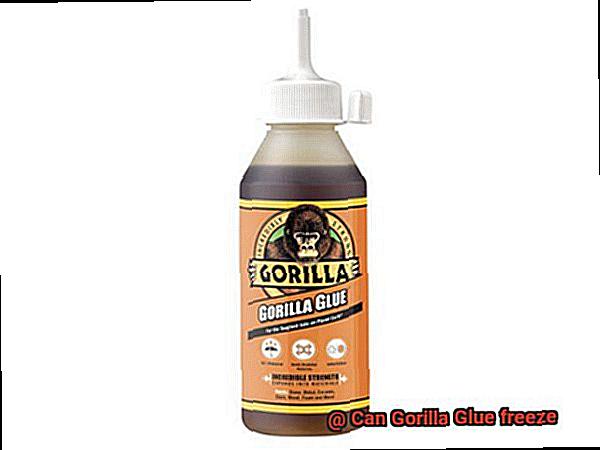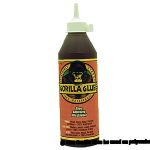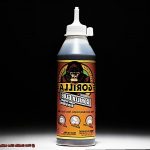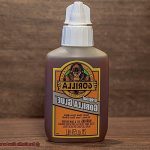Are you a DIY enthusiast who loves tackling tough projects with the help of trusty adhesives? If so, then you’ve likely heard of Gorilla Glue. This robust and durable adhesive has become a go-to choice for many, but there’s one question that keeps popping up: can Gorilla Glue freeze?
In this blog post, we’re going to dive deep into the world of Gorilla Glue and its ability to withstand freezing temperatures. We’ll uncover the secrets behind its formulation, explore how it holds up under extreme conditions, and share some practical tips on how to store and handle this adhesive without compromising its effectiveness.
Join us on this journey as we unravel the truth about Gorilla Glue’s resilience in freezing temperatures. By the end, you’ll have all the knowledge you need to confidently use this adhesive in any weather condition – whether it’s frosty winter mornings or scorching summer afternoons. So grab your tool belt and let’s get started.
Does Gorilla Glue Freeze?
Contents
- 1 Does Gorilla Glue Freeze?
- 2 What is the Main Component of Gorilla Glue?
- 3 How Does Freezing Temperatures Affect Gorilla Glue?
- 4 Recommended Storage Conditions for Gorilla Glue
- 5 What to Do if Your Gorilla Glue Has Frozen
- 6 Benefits of Using Gorilla Glue in Cold Temperatures
- 7 Disadvantages of Using Gorilla Glue in Cold Temperatures
- 8 Alternatives to Using Gorilla Glue in Freezing Conditions
- 9 Conclusion
Gorilla Glue is a powerhouse adhesive known for its strength and versatility. But what happens when this mighty glue encounters freezing temperatures? In this article, we will explore the effects of cold conditions on Gorilla Glue and why it’s important to protect it from extreme cold. So, if you’ve ever wondered whether Gorilla Glue can freeze, read on to discover the answers.
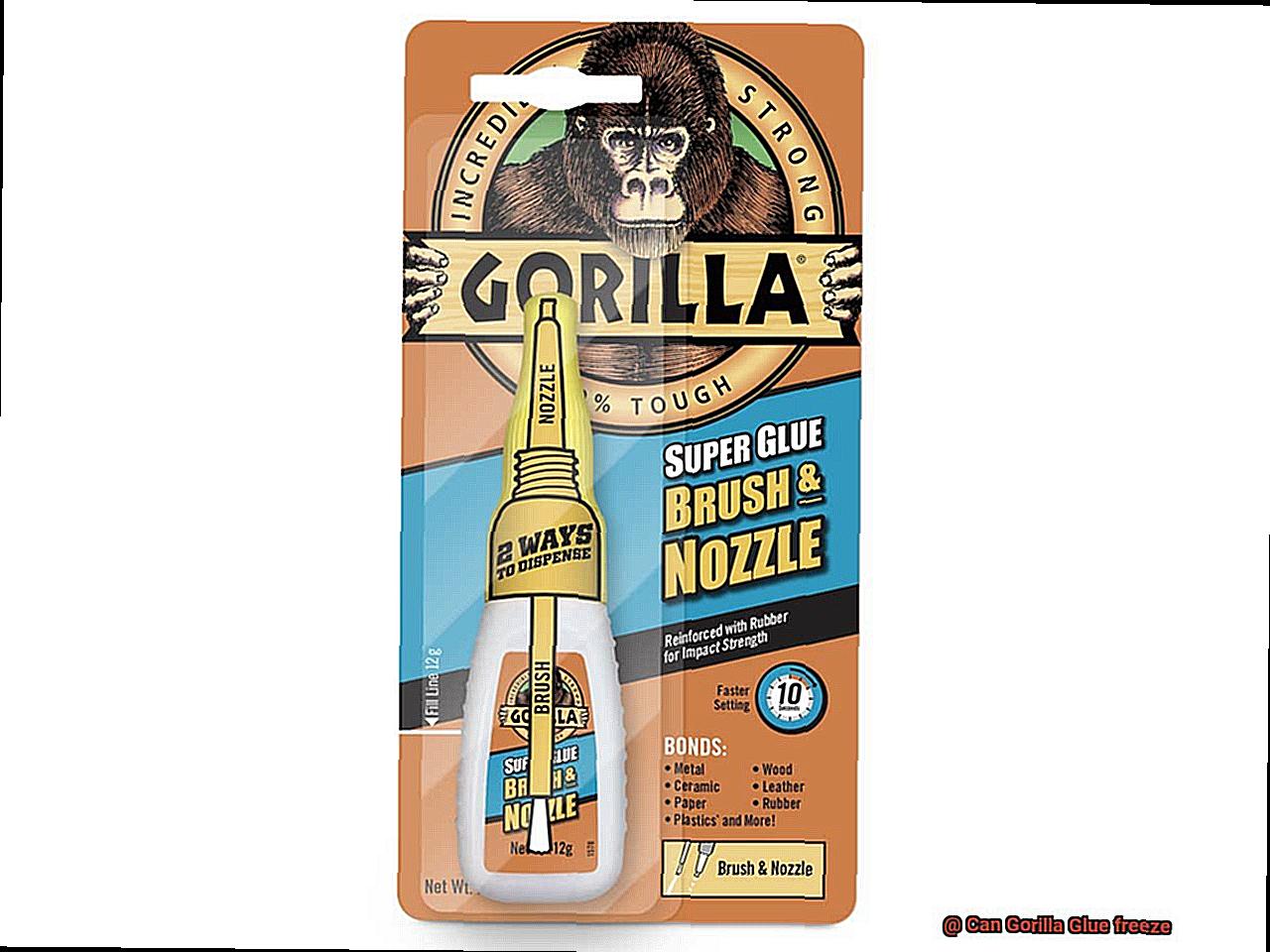
The Science Behind Gorilla Glue:
Gorilla Glue, composed primarily of polyurethane, is a durable and robust adhesive compound. However, polyurethane-based adhesives like Gorilla Glue have a lower resistance to freezing temperatures compared to other types of glues.
The Problem with Freezing Temperatures:
When subjected to freezing temperatures, Gorilla Glue can undergo significant changes that affect its performance. Here are a few key points to consider:
- Thickening: Extreme cold can cause the glue to become thick and unusable. The composition of Gorilla Glue may change when frozen, resulting in a loss of its adhesive properties.
- Solidification: The freezing point of Gorilla Glue is around 32 degrees Fahrenheit (0 degrees Celsius). If exposed to temperatures below this threshold, the adhesive could solidify and lose its ability to bond properly.
- Inconsistent Texture: Freezing Gorilla Glue may cause it to separate or develop inconsistencies in its texture. If you notice any changes in the glue’s appearance or consistency after exposure to cold temperatures, it is best to discard it and obtain a fresh supply.
Proper Storage Is Key:
To ensure the longevity and effectiveness of Gorilla Glue, proper storage is essential:
- Temperature Control: Store Gorilla Glue in a temperature-controlled environment. Ideally, keep it at room temperature, between 70 and 80 degrees Fahrenheit (21 and 27 degrees Celsius).
- Tight Sealing: Always seal the container tightly to prevent air and moisture from affecting the glue’s performance.
- Dry and Cool Place: Store Gorilla Glue in a dry and cool place, away from direct sunlight, humidity, and freezing temperatures.
- Winter Precautions: If you live in an area with extremely cold temperatures, it is advisable to bring your Gorilla Glue indoors during the winter or use alternative adhesives formulated for cold weather applications.
What is the Main Component of Gorilla Glue?
Today, we embark on a journey to uncover the secret behind Gorilla Glue’s incredible strength. Put on your safety goggles and prepare to be amazed.
- At the core of Gorilla Glue lies its secret weapon: polyurethane. This remarkable component is the superhero of the glue world, capable of bonding almost anything under the sun. Let’s dive deeper into what makes it so special:
- Exceptional Bonding Properties: Polyurethane possesses an unrivaled ability to create bonds stronger than your Monday morning caffeine cravings. From wood to metal, plastic to ceramic, and even stone, Gorilla Glue is your go-to adhesive.
- Magical Moisture Activation: Ever wondered how Gorilla Glue becomes as strong as an ox once applied? The polyurethane component undergoes a chemical reaction when exposed to moisture. This triggers the glue’s activation and initiates the bonding process, setting it apart from other adhesives.
- Expansion Extravaganza: Imagine this scenario – you’ve bonded two surfaces together, but there are tiny gaps or imperfections between them. Fear not. Gorilla Glue’s polyurethane properties come to the rescue. As it dries, it expands, filling those gaps and creating a tight seal. This expansion distributes stress evenly across the bonded surfaces, providing a secure hold. It’s like a warm hug for your project.
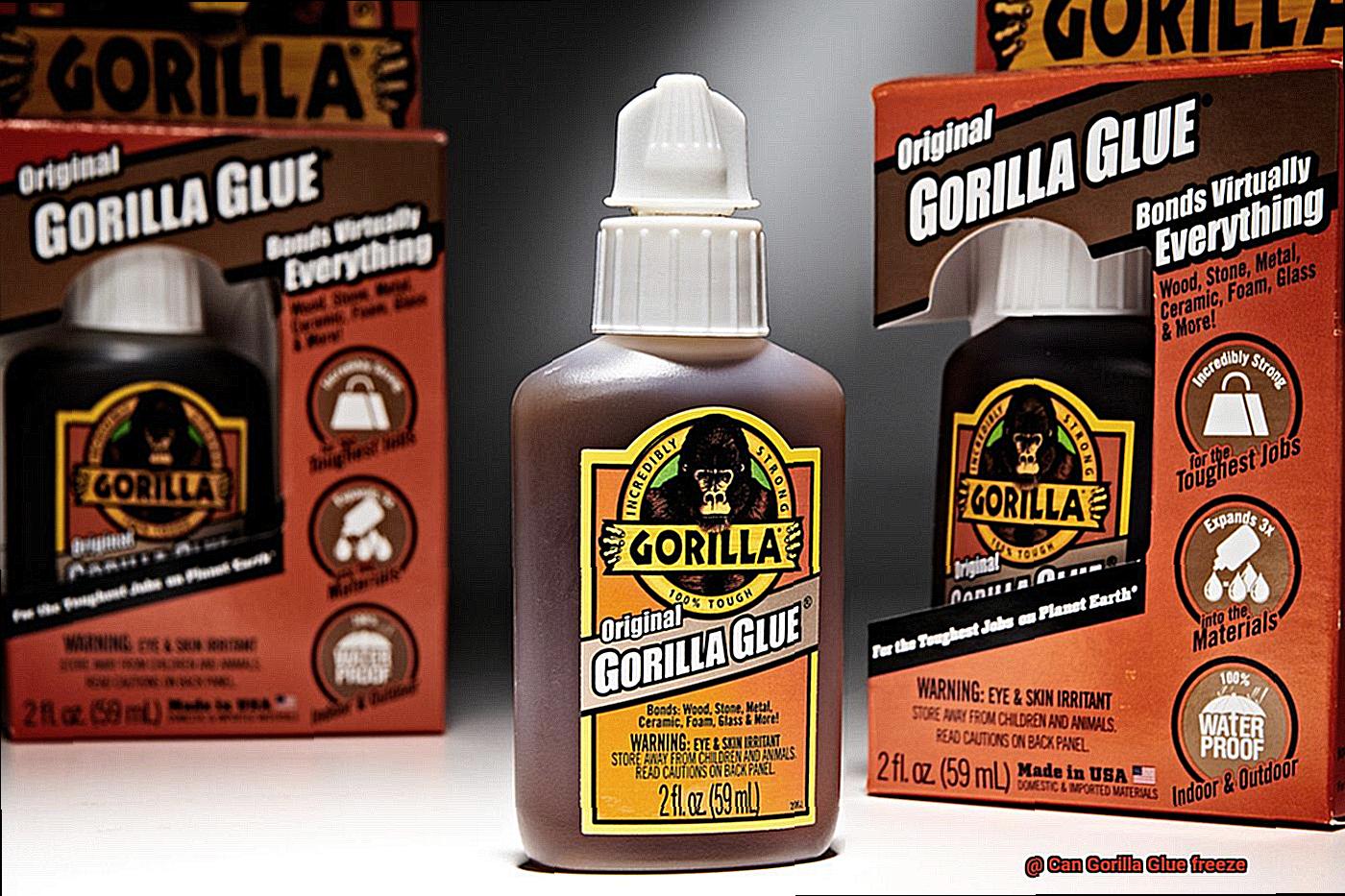
Now that we’ve unraveled the main component of Gorilla Glue and its extraordinary qualities, let’s explore some pro tips for using this adhesive effectively:
- Cleanliness is Key: Before applying Gorilla Glue, ensure your surfaces are free from oils and contaminants. A little prep work goes a long way in achieving a rock-solid bond.
- Activate with Water: For an extra boost in bonding strength, dampen one of the surfaces with a small amount of water before applying the glue. This activates the polyurethane and enhances its adhesive powers.
- Handle with Care: Remember, Gorilla Glue is activated by moisture, so handle it with caution. Store it away from freezing temperatures to prevent thickening or solidification. Nobody wants a glue popsicle.
In conclusion, polyurethane is the main component of Gorilla Glue, responsible for its legendary strength. Its ability to bond various materials and expand to fill gaps makes it a favorite among DIY enthusiasts and professionals alike. So whether you’re tackling a woodworking project or fixing a broken ceramic mug, trust in the power of Gorilla Glue and let its polyurethane magic work wonders.
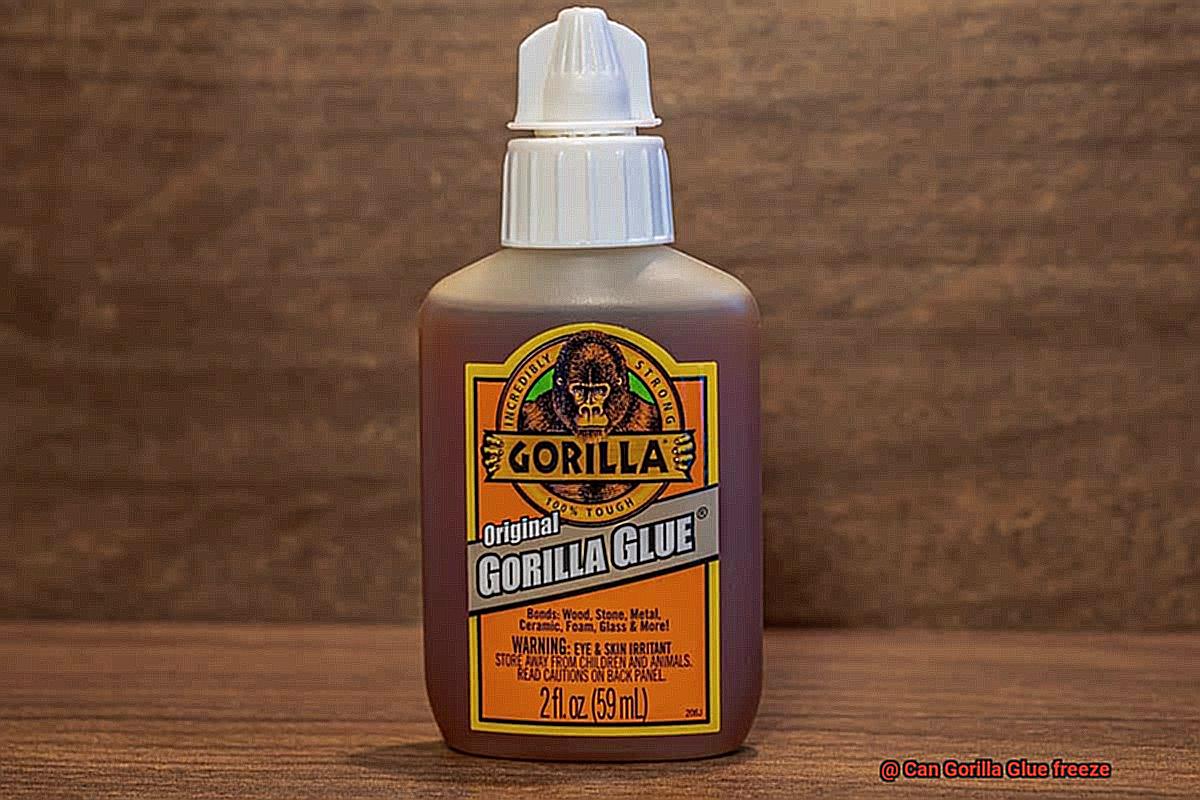
How Does Freezing Temperatures Affect Gorilla Glue?
Step into the captivating realm of adhesive exploration, where we delve into the frigid enigma surrounding Gorilla Glue, a beloved titan in the adhesive universe. Prepare to embark on a chilling journey as we uncover how freezing temperatures impact the resilience of this formidable glue.
The Achilles Heel of Polyurethane:

Feeble Bonds and Fickle Adhesion:

Picture a scenario where you’re endeavoring to bind two surfaces with Gorilla Glue that has endured an icy imprisonment. Alas. Your plans crumble as the glue stubbornly refuses to spread or adhere as it should. The outcome? Tenuous bonds and potential project catastrophes. It’s as if our hero relinquishes its superpowers under winter’s icy grasp.
Storing with Care and Salvaging the Situation:
To avert such adhesive apocalypses, proper storage is paramount. Shield Gorilla Glue from freezing temperatures by housing it in a cool, dry abode. However, should your glue fall prey to Jack Frost’s clutches, fear not. Gradually thaw it at room temperature before unleashing its powers once more. Yet caution is advised—thawing can only rectify so much, and the adhesive properties may remain compromised.
Recommended Storage Conditions for Gorilla Glue
To ensure the longevity and effectiveness of Gorilla Glue, it is crucial to adhere to the recommended storage conditions.
Temperature is the first key ingredient in maintaining Gorilla Glue’s adhesive prowess. This adhesive superhero thrives in a cozy environment, with an ideal storage temperature ranging from 55°F to 75°F (13°C to 24°C). Extreme temperatures are its kryptonite, causing this glue to lose its consistency and performance. So, keep it away from the scorching heat or freezing cold.
Speaking of freezing temperatures, they are Gorilla Glue’s arch-nemesis. Exposing this glue to the icy grip of Jack Frost can lead to its demise. It may crystallize or solidify, rendering it utterly useless. So, remember, freeze not thy glue.
But that’s not all. Moisture and excessive heat can also wreak havoc on the quality of Gorilla Glue. To protect its adhesive powers, store it in a cool and dry place, far away from direct sunlight and heat sources. And when you’re not using it, seal that container tightly. This prevents air from entering and causing the glue to dry and harden.
Now, let’s talk about reviving our frozen friend. If your Gorilla Glue has been exposed to freezing temperatures, thaw it at room temperature before using it. However, be aware that its effectiveness may still be compromised. To be safe, test it on a small area before entrusting it with important projects.
And finally, heed this warning: keep Gorilla Glue out of reach of children and pets. While it may possess superhero strength, it certainly isn’t meant for ingestion.
What to Do if Your Gorilla Glue Has Frozen
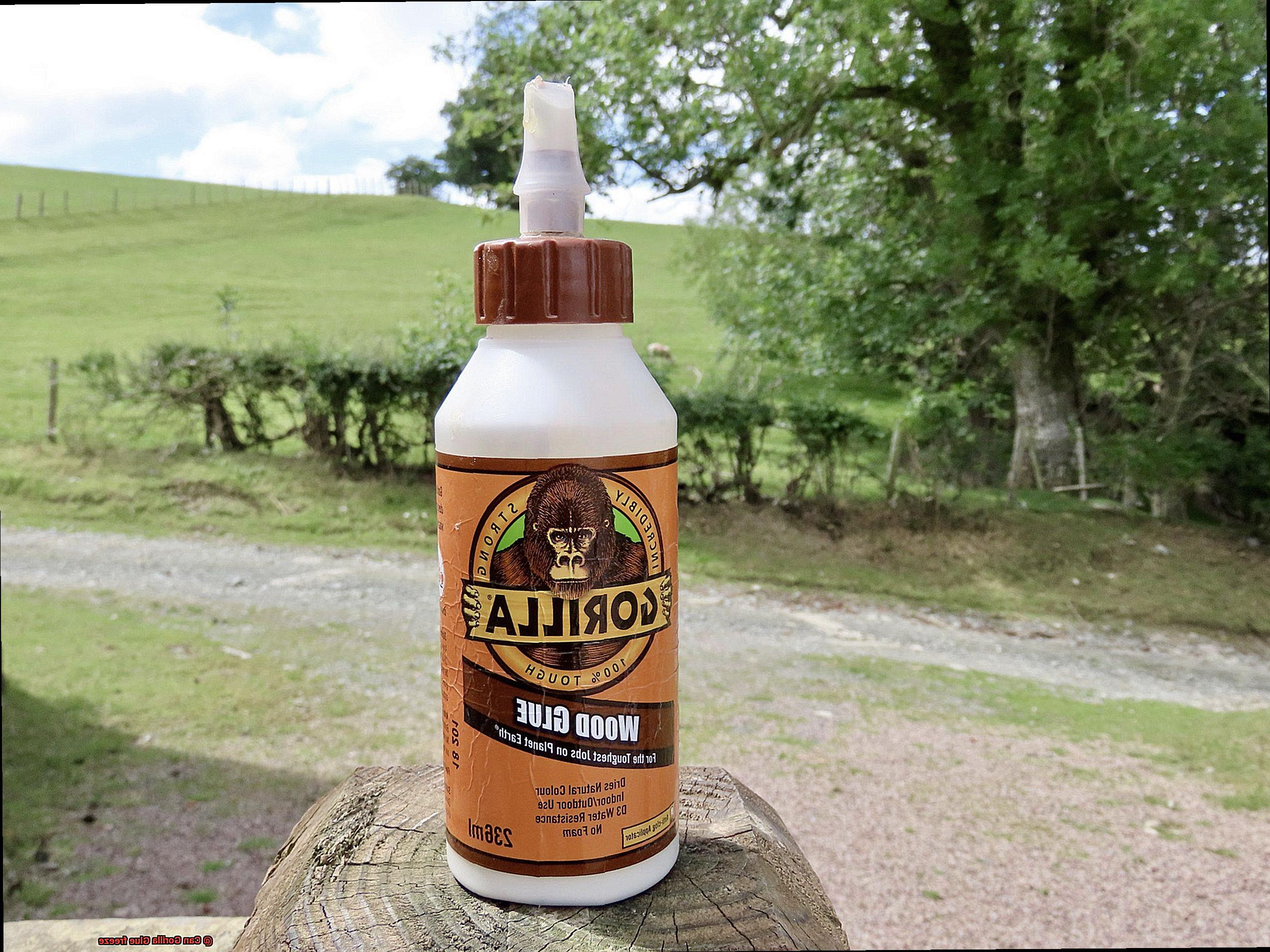
Finding your Gorilla Glue frozen can be a sticky situation. Known for its strength and versatility, Gorilla Glue is a popular adhesive choice. However, extreme cold temperatures can cause it to freeze, rendering it ineffective. In this comprehensive guide, we will walk you through the steps to revive your frozen Gorilla Glue and provide valuable tips to prevent future freezing.
Step 1: Thawing Your Glue
The first step is to bring your frozen Gorilla Glue indoors and allow it to thaw naturally at room temperature. Avoid quick fixes like microwaving or heating in an oven, as these methods can damage the glue. Patience is essential in this process.
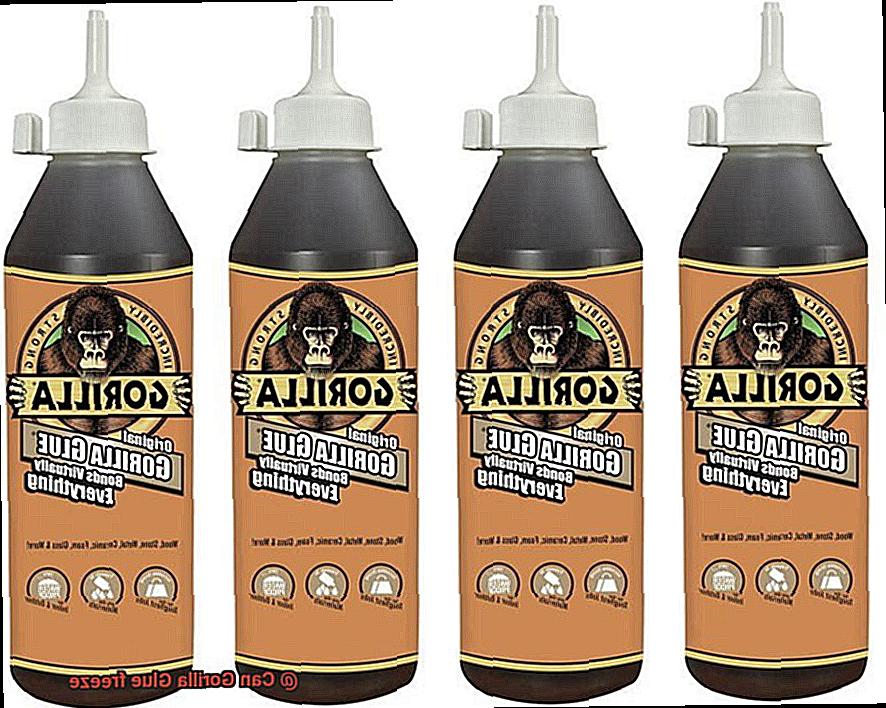
Step 2: Mixing It Up
After your glue has completely thawed, gently knead the bottle or tube to mix any separated components. This action helps restore its original consistency, ensuring a strong bond when applied.
Step 3: Testing Its Strength
Before using your thawed Gorilla Glue on an important project, it’s crucial to perform a test application. Apply a small amount of glue onto a scrap material similar to what you intend to bond. This step allows you to evaluate its adhesion strength and drying time.
Step 4: A Warm Water Bath (If Necessary)
If your glue remains clumpy even after thawing, consider placing the bottle in a warm water bath. Fill a container with warm water (not hot) and submerge the glue bottle for a few minutes. This gentle heat can soften the glue, making it easier to work with.
Step 5: Discard When Needed
If, despite your best efforts, the glue does not regain its original consistency or fails to provide a strong bond during testing, it may be necessary to discard it. Using compromised glue could lead to unreliable bonding and potential project failures.

Prevention Is Key:
To prevent future freezing, it’s crucial to store your Gorilla Glue in a cool, dry place away from extreme temperatures. If you live in an area with extremely cold winters, consider storing the glue indoors or in a heated garage. Avoid leaving it in your vehicle during winter months, as car interiors can become extremely cold.
Benefits of Using Gorilla Glue in Cold Temperatures
Finding a glue that can withstand the harsh chill of winter can be a daunting task. Fortunately, Gorilla Glue comes to the rescue. Renowned for its unrivaled strength and versatility, Gorilla Glue is the ultimate adhesive for cold weather projects and repairs.
Here, we will explore the numerous advantages of using Gorilla Glue in freezing temperatures, ranging from its unwavering effectiveness to its exceptional durability in extreme weather conditions. So grab a warm beverage and let’s delve into the benefits of this remarkable adhesive.
Maintains Strength and Bonding Capabilities:
In contrast to other adhesives that become brittle or less adhesive in freezing temperatures, Gorilla Glue stands strong. It retains its powerful adhesive properties, ensuring a reliable and long-lasting bond for your outdoor projects or repairs. Be it fixing a broken outdoor fixture or sealing a crack, Gorilla Glue has got you covered.

Versatility at its Finest:
Gorilla Glue is not picky when it comes to surfaces. Whether it’s wood, metal, plastic, ceramics, or more, this glue can handle them all with ease. So whether you’re working on an outdoor furniture project or fixing a broken household item during the winter season, you can rely on Gorilla Glue to get the job done.
Wide Temperature Range:
Extreme weather conditions are no match for Gorilla Glue. It can withstand temperatures as low as -40°F (-40°C) and as high as 200°F (93°C). So even if Jack Frost is nipping at your fingers, rest assured that your adhesive will remain strong.
Water-Resistant Wonder:
Winter often brings snow, ice, and moisture. However, there’s no need to worry. Gorilla Glue is water-resistant, ensuring that its bonding strength remains unaffected even when exposed to water or humidity. So go ahead and tackle those outdoor projects without fretting about the elements.
Fast Curing Time:
Time is of the essence, especially when it’s freezing outside. Gorilla Glue sets within 1-2 hours and reaches maximum strength within 24 hours. This quick-drying feature allows you to complete your projects efficiently even in colder conditions, enabling you to move on with other tasks sooner.
Durability in the Face of Challenges:
Cold climates can be unforgiving, but Gorilla Glue is up for the challenge. Its durable adhesive can resist impacts and vibrations, ensuring that your repairs or projects remain intact despite temperature fluctuations and severe weather conditions. No matter how harsh the winter may be, Gorilla Glue will not let you down.
Disadvantages of Using Gorilla Glue in Cold Temperatures
When it comes to using Gorilla Glue in cold temperatures, there are several disadvantages to keep in mind. First and foremost, Gorilla Glue takes longer to cure in the cold. The chemical reaction that causes the glue to harden and create a strong bond slows down significantly in freezing temperatures. So, if you’re trying to glue something together on those chilly winter days, be prepared to exercise patience and wait longer for your project to be completed.
Not only does Gorilla Glue take longer to cure in the cold, but the bond it creates may also be weaker. Cold temperatures can negatively affect the overall performance of the glue, making it less reliable when it’s chilly outside. This means that if you’re relying on Gorilla Glue to hold something together in extreme cold or freezing temperatures, you might want to think twice.
Gorilla Glue can also become more brittle in cold temperatures. This means that if you’re using it on something that will be subject to stress or impact, like an outdoor decoration that may get knocked around by wind or snow, it might not hold up as well as you’d hope.
In addition to all of this, Gorilla Glue may not adhere well to certain materials in the cold. Some plastics and metals can become more rigid and less receptive to adhesive bonding when the temperature drops. So if you’re working with these materials in freezing temperatures, Gorilla Glue might not be your best bet.
Last but not least, using Gorilla Glue in cold temperatures can be a bit of a challenge due to its viscosity. The cold weather can cause the glue to become thicker and harder to work with. This means that if you’re trying to get an even application or achieve a specific result, you might find yourself fighting against the glue’s resistance.
Alternatives to Using Gorilla Glue in Freezing Conditions
Imagine a winter wonderland, where your projects are at risk of falling apart due to the frigid temperatures. Fear not. We have the key to keeping your creations intact in the icy cold. Say goodbye to Gorilla Glue and hello to alternative adhesives that can brave the freeze. Let’s dive into these frost-resistant adhesives.
Epoxy Resin: The Mighty Ice Warrior
Pros:
- Boasts incredible bonding strength and durability
- Fearlessly endures extreme temperatures
- Perfect for industries demanding toughness in harsh conditions
Cons:
- Requires more time to fully cure compared to Gorilla Glue
- Precise mixing ratios are necessary for optimal results
- Offers limited flexibility once cured
Polyurethane Adhesive: The Chameleon of Cold
Pros:
- Displays flexible and versatile bonding capabilities
- Maintains effectiveness in freezing conditions
- Adapts effortlessly to various materials
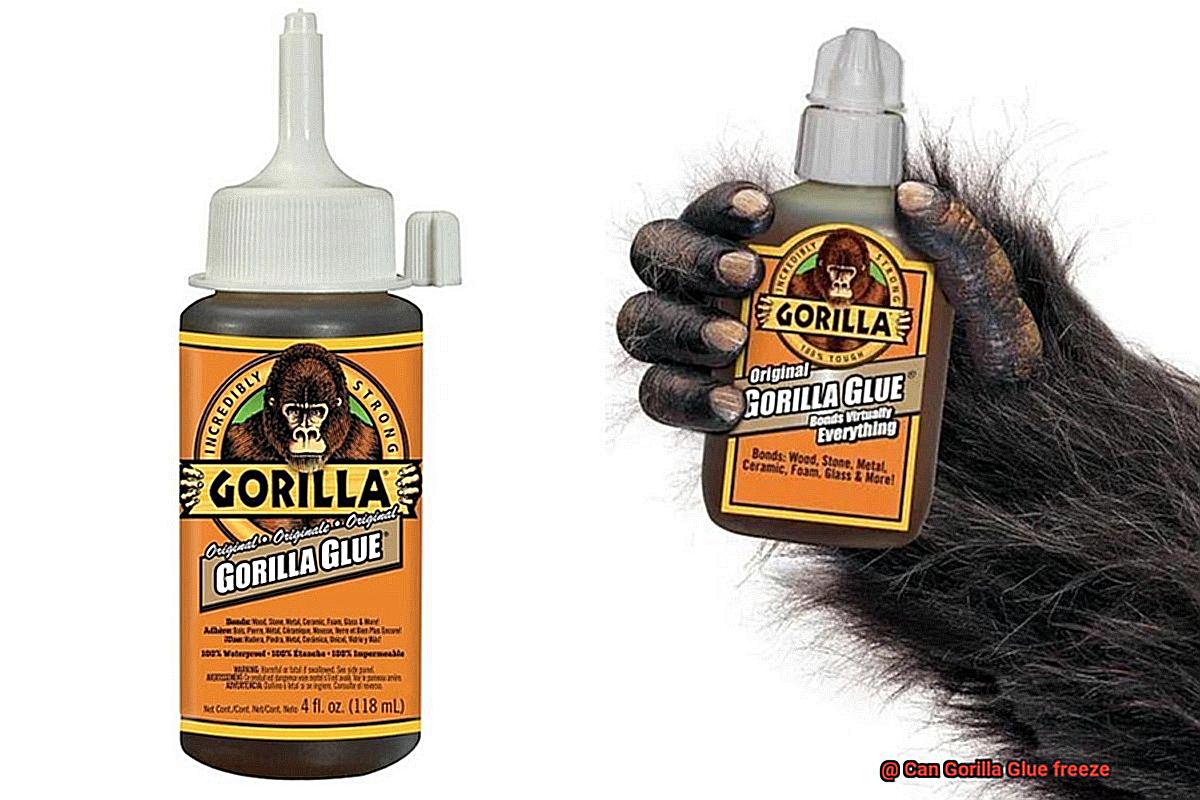
Cons:
- Curing time is longer than with Gorilla Glue
- May require clamping or support during the curing process
- Not as strong as epoxy resin for certain applications
Silicone Adhesive: The Arctic Survivor
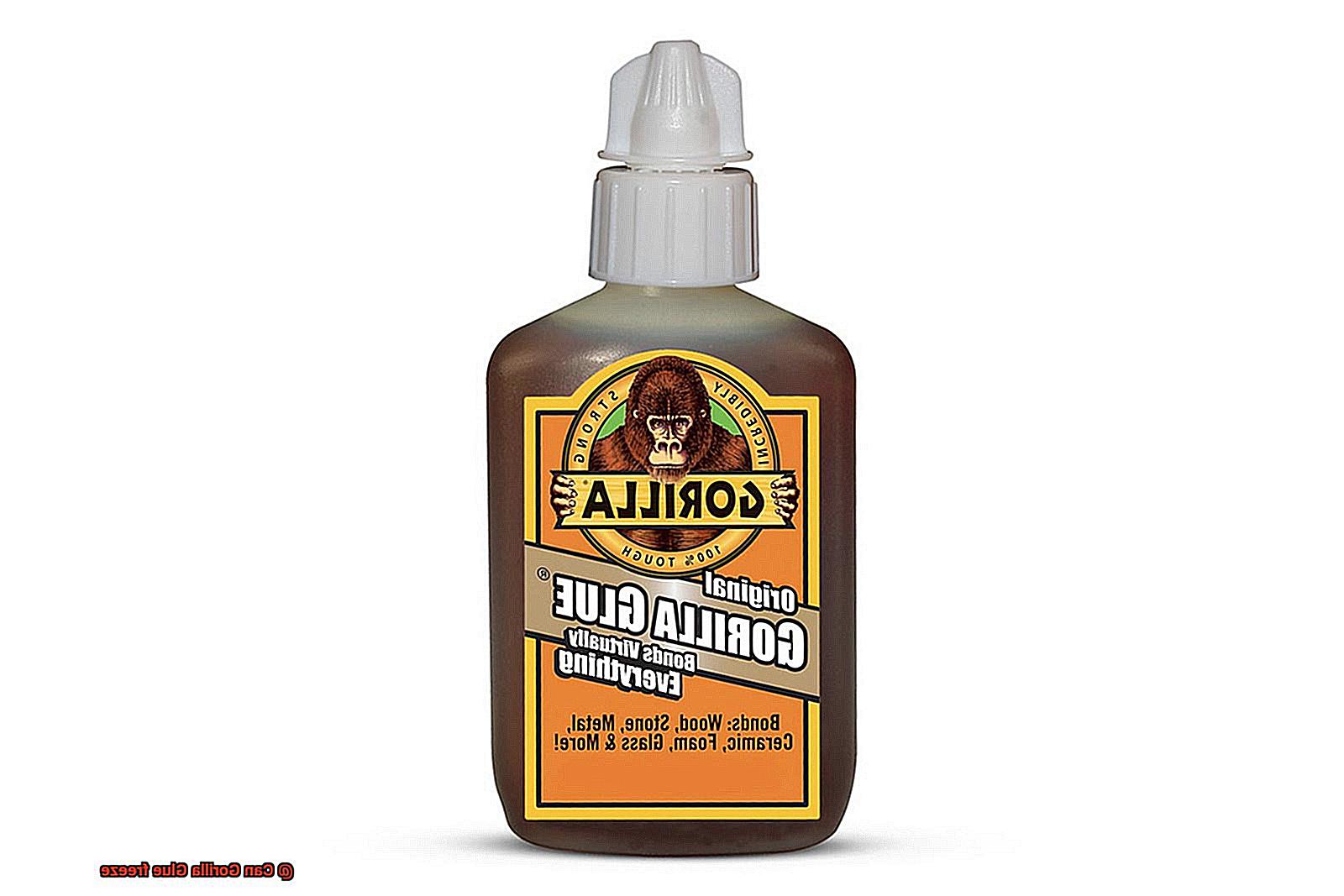
Pros:
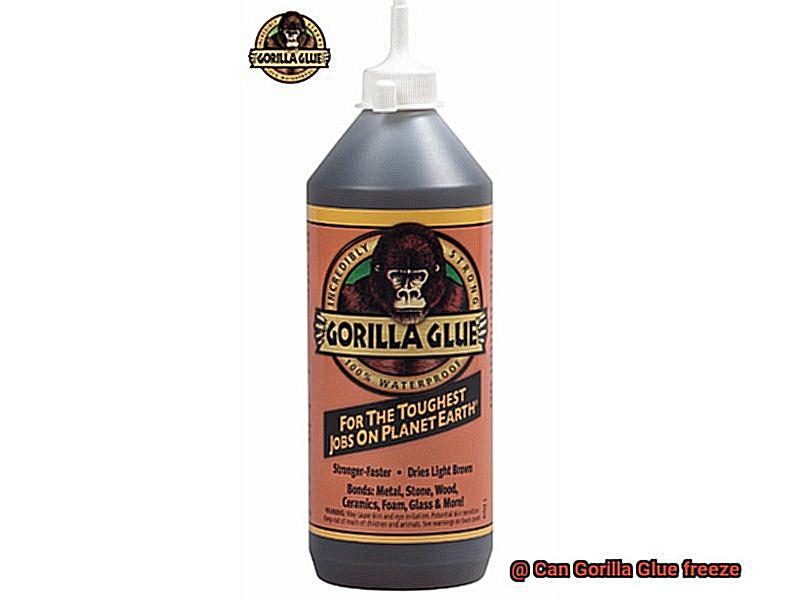
- Exhibits exceptional flexibility and durability
- Defies extreme temperatures with ease
- Ideal for outdoor applications
Cons:
- Curing time is lengthier compared to Gorilla Glue
- Proper surface preparation is crucial for optimal bonding
- May not be suitable for high-stress applications
Cyanoacrylate Adhesives (Superglues): The Frosty Fixer
Pros:
- Forms quick and sturdy bonds, even in freezing conditions
- Perfect for bonding metal surfaces in ice-cold environments
- Provides instant results with ease of use
Cons:
- Not as versatile as other alternatives for different materials
- Can become brittle under extreme stress
- Prone to clogging or drying out if not properly stored
Conclusion
In conclusion, it is important to note that Gorilla Glue can indeed freeze.
When exposed to extremely low temperatures, this adhesive can become solid and lose its effectiveness. Freezing Gorilla Glue can cause it to lose its ability to bond surfaces together, rendering it useless for any intended purpose.
Therefore, it is crucial to store this adhesive in a temperature-controlled environment to ensure its longevity and optimal performance.

